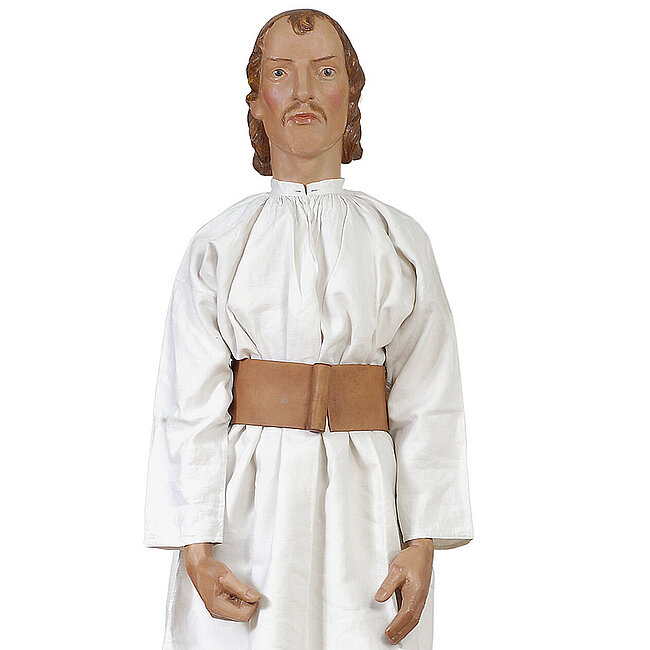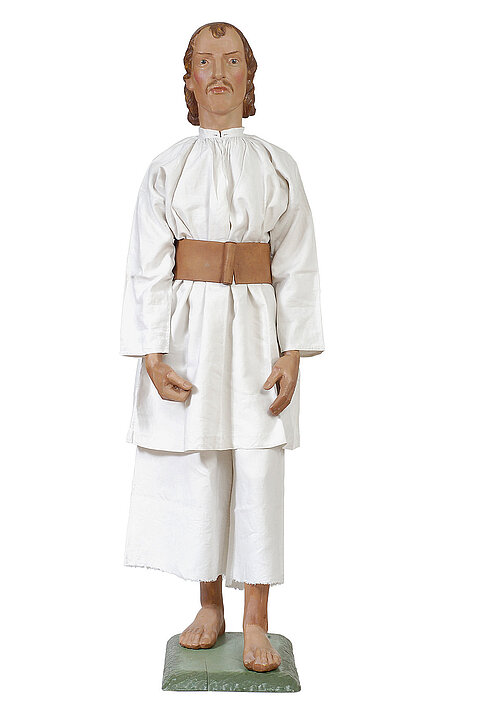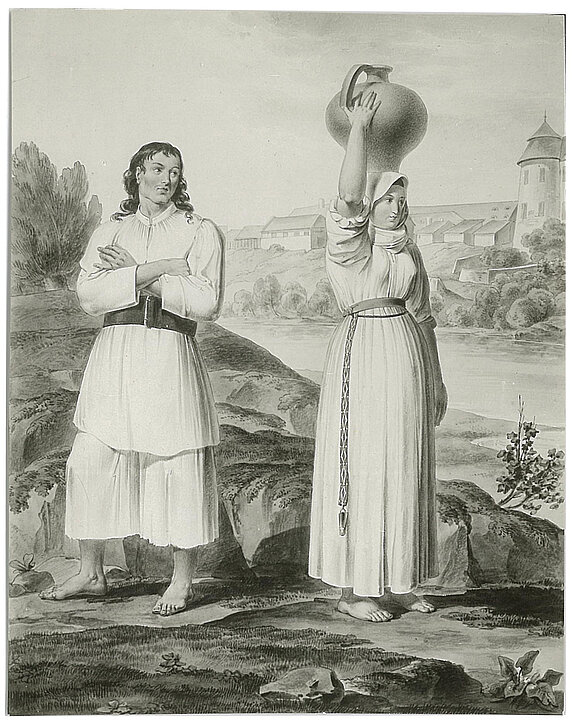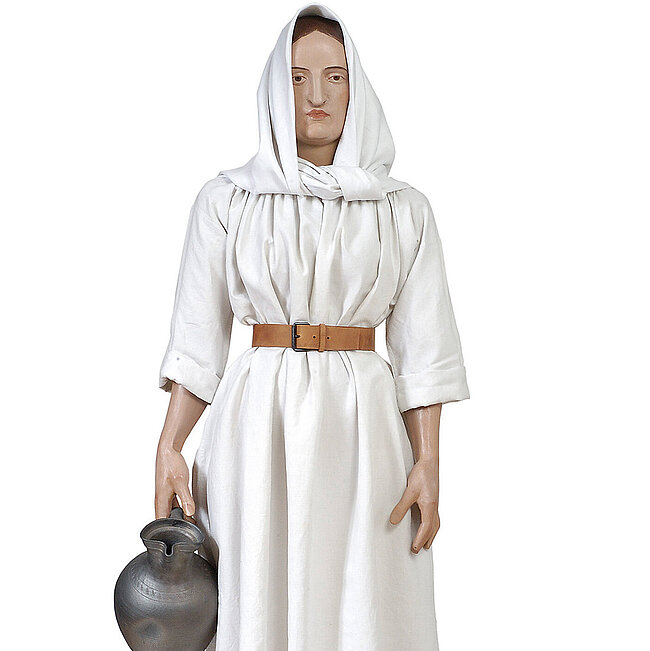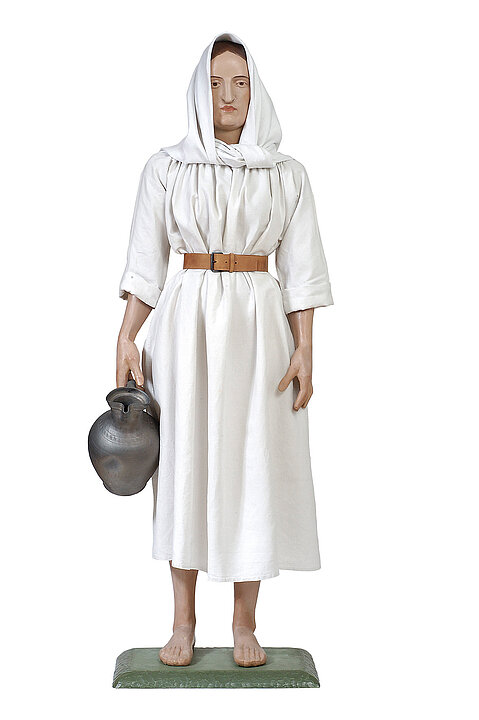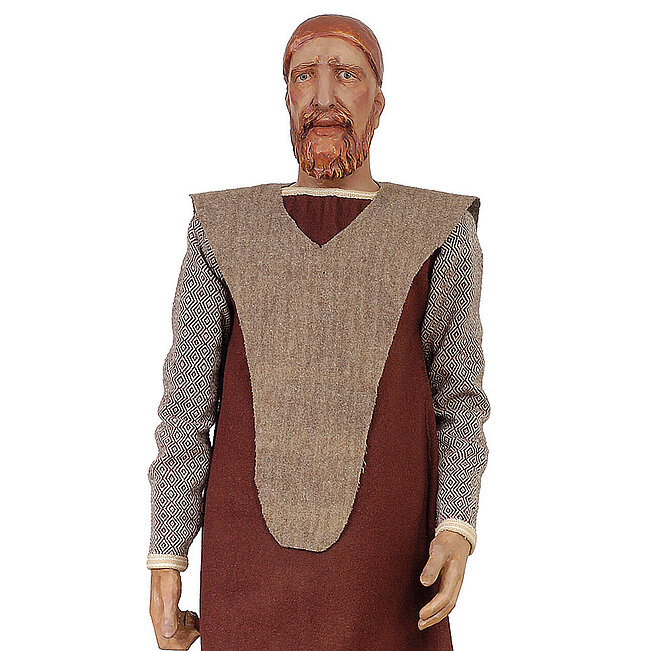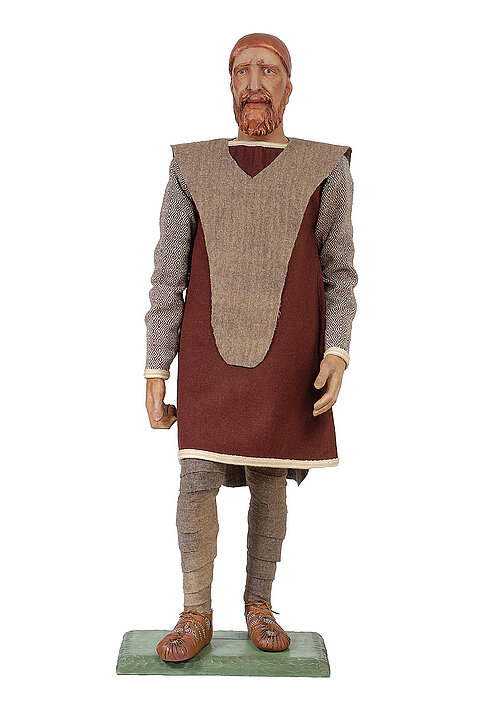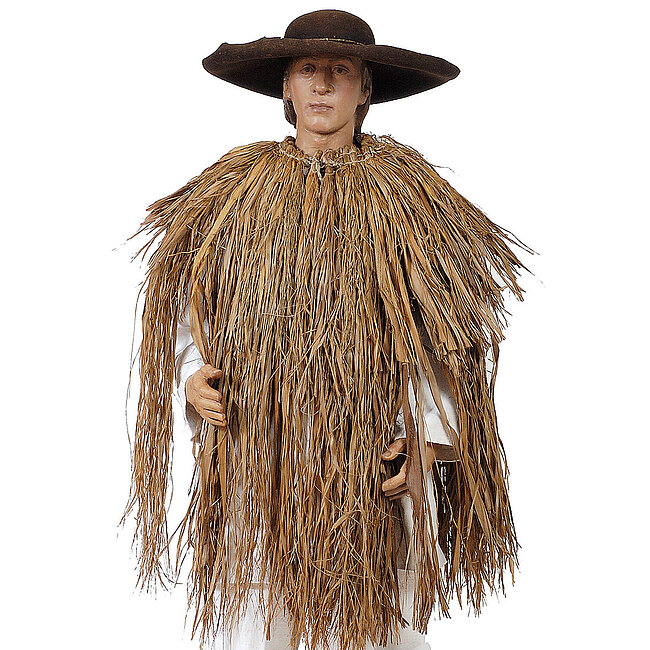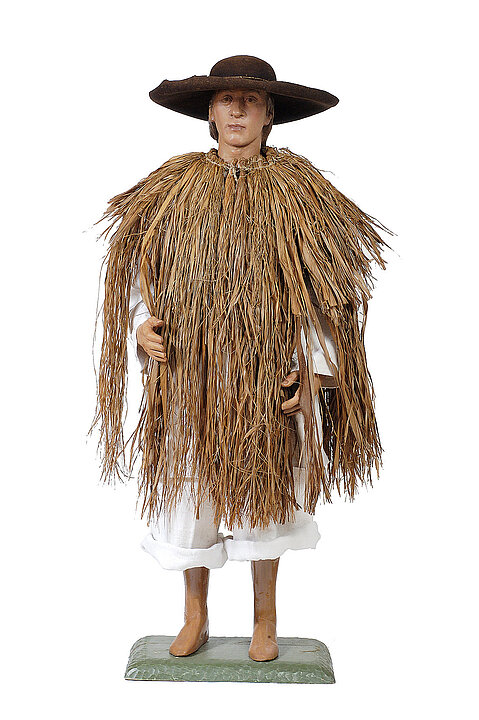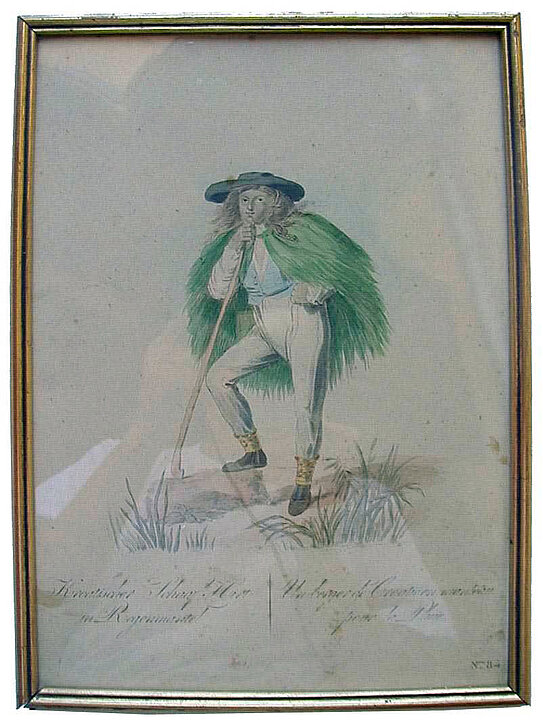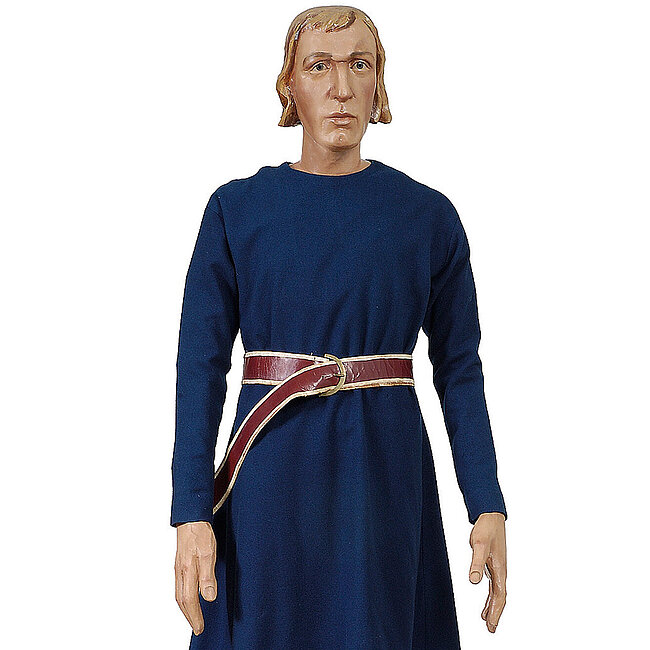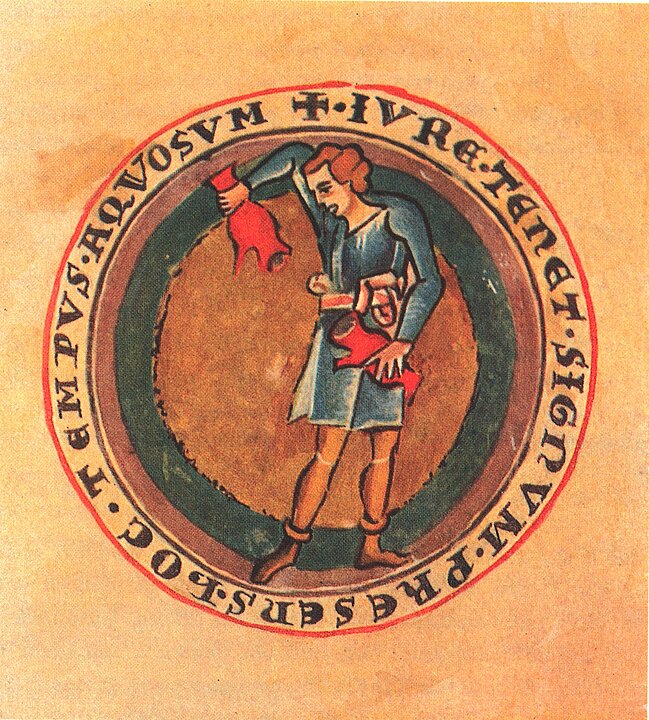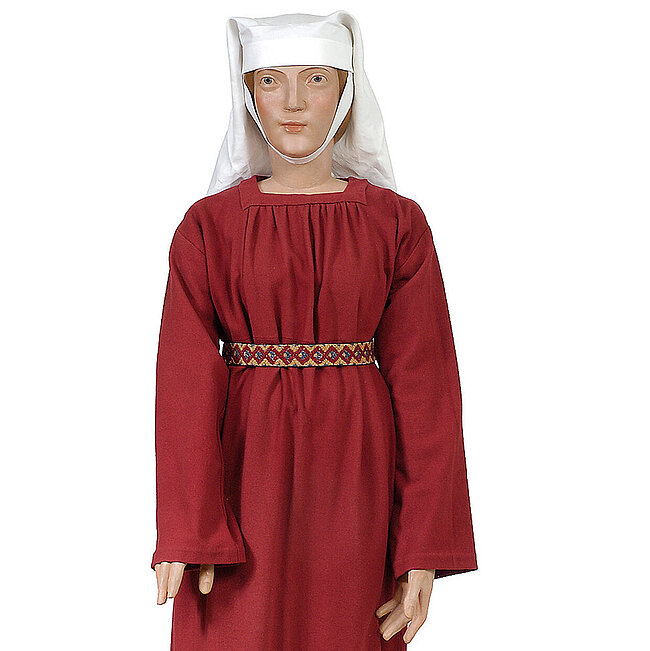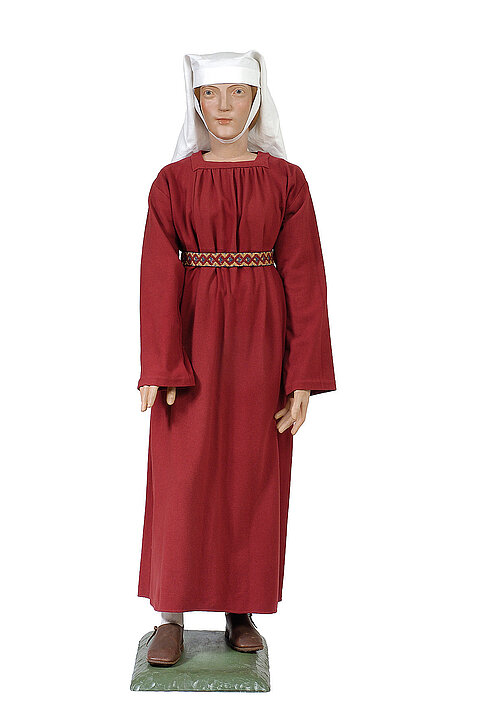In search of ‘primitive dress’
Viktor Geramb took the model for the clothing of the Slavic Man and Slavic Woman from the 10th to the 19th centuries from a Romantic depiction by Karl Russ (1810), a court painter to Archduke Johann. In this picture the couple is depicted barefoot and in white clothes fastened with a simple leather belt.
Saving traditional folk culture or ethnic stereotyping?
Is the portrayal of the Slavic Women/Man a longing for the ‘original and natural’ and the ‘primitive’ or a revitalisation thereof—a longing also anchored in folk studies at the beginning of the 20th century? Or was the museum reinforcing the cultural stereotyping of people from southeast Europe, as was already common in the 19th century? After all, early folk studies and ethnology did engage in the nationalisation, ethnicisation and biologisation of peoples. The classification and representation of ‘others’ in distinction to ‘one's own people’ found visible expression in, among other things, Tracht understood as national costume. Yet colourful Tracht also emerged in the southeast European parts of the Habsburg Monarchy in the context of nationalist efforts, and Viktor Geramb himself had always described ‘Slavic Tracht’ as colourful. In the showcase, however, the proximity of the differently dressed figures conveys a disparity of lifestyles and cultural development. The figures embodying Slavic Man/Slavic Woman were assigned a place near the bottom of the developmental scale on account of their alleged centuries-long bare-footedness and undyed clothing.



















